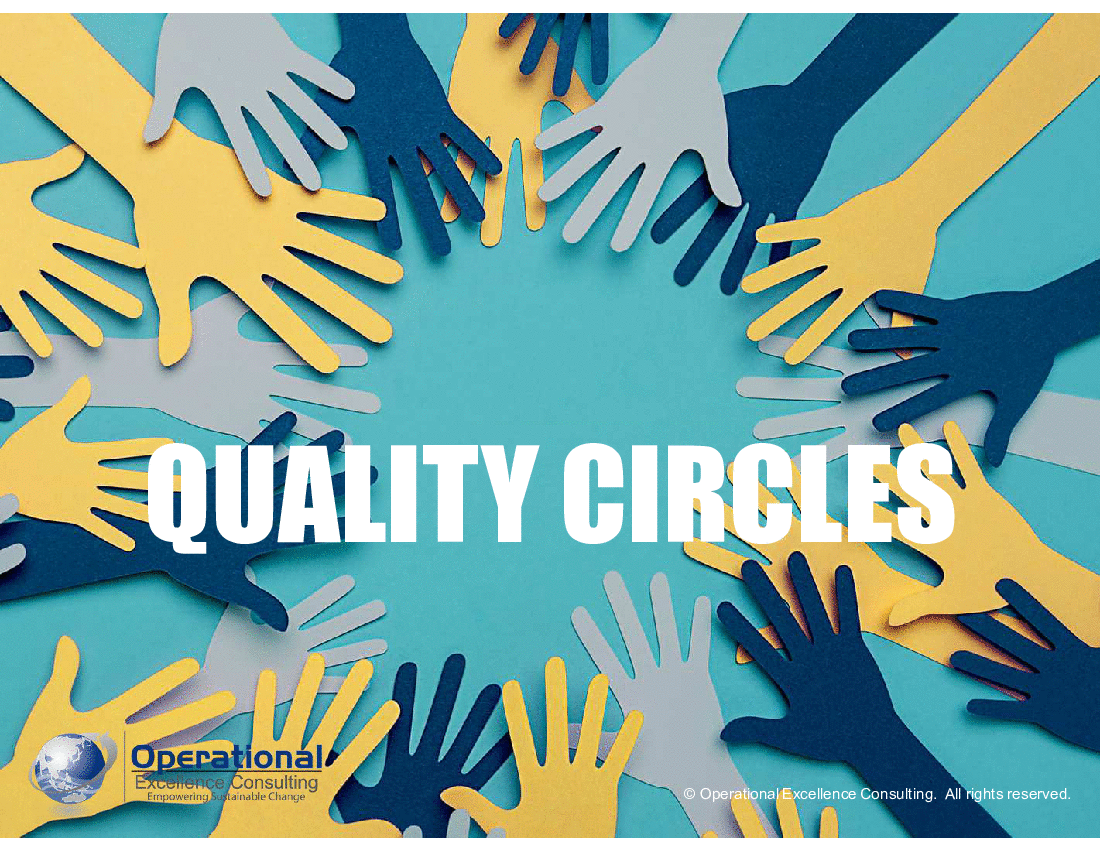Quality Circles (PowerPoint PPTX Slide Deck)
PowerPoint (PPTX) + Excel (XLSX) 103 Slides
BENEFITS OF THIS POWERPOINT DOCUMENT
- Provides a framework for the setting up and management of Quality Circles as a channel for employee engagement.
- Provides practical tips to start and sustain Quality Circles in the workplace.
- The Quality Circles framework is applicable to other Small Group Activities such as Kaizen Circles, 5S, TPM, Suggestion System, etc.
QUALITY MANAGEMENT PPT DESCRIPTION
Successful organizations leverage on total employee participation to achieve high quality standards in order to satisfy their customers. However, in the Gallup State of the Global Workplace 2023 Report, only 20% of employees are engaged at work.
As part of the TQM movement, Quality Circles (also popularly known as Quality Control Circles) or Small Group Activities consist of a small group of employees from the same workplace who voluntarily meet on a regular basis to identify, investigate, analyze and solve work-related problems so as to contribute to the improvement of the employees, workgroup and the organization.
The benefits of Quality Circle activities include improved employee morale, reduced absenteeism and staff turnover, improved teamwork and communication, increased productivity, and last but not least improved quality of products and services.
This presentation teaches the philosophy and concept of Quality Circles, defines the objectives, benefits and the modus operandi of Quality Circles. It also describes the organizational structure, roles and responsibilities and provides practical tips for managing Quality Circles. The Quality Circles framework is applicable to other Small-Group Activities such as Kaizen Circles, 5S, TPM, Suggestion System, etc.
||||||||||||||||||||||||||||||||||||||||||||||||||||||||||||||||||||||||||||||||||||||||||||||||||||||||||||||||||||||||||||||||||||||||||||||||||||||
This training package includes:
1. Quality Circles training presentation (PowerPoint format)
2. Forms for administering Quality Circles (Excel formats):
a. Quality Circle Registration Form
b. Approval Form for Theme / Recommendations / Standardization
c. Quality Circle Activity Plan
d. Quality Circle Minutes of Meeting Template
||||||||||||||||||||||||||||||||||||||||||||||||||||||||||||||||||||||||||||||||||||||||||||||||||||||||||||||||||||||||||||||||||||||||||||||||||||||
LEARNING OBJECTIVES
1. Understand the philosophy and concept of Quality Circles.
2. Define the objectives, benefits and the method of Quality Circles operation.
3. Describe the organizational structure and roles and responsibilities of Quality Circles.
4. Gain practical tips for managing Quality Circles and define the key success factors.
CONTENTS
1. Background and Introduction
2. Quality Circles
3. Practical Tips for Managing Quality Circles
4. Overview of PDCA Cycle and QC Tools
5. A Case Study on QC Problem Solving
6. Key Factors for Quality Circle Success
7. Questions for Discussion
Please note that this presentation focuses on the infrastructural set up, formation and management of Quality Circles. It does not include the step-by-step details of PDCA problem-solving process and tools. To complement this presentation with your preferred problem-solving methodology, please check out the various approaches that are available from this author or at Flevy.
Got a question about the product? Email us at support@flevy.com or ask the author directly by using the "Ask the Author a Question" form. If you cannot view the preview above this document description, go here to view the large preview instead.
Source: Best Practices in Quality Management PowerPoint Slides: Quality Circles PowerPoint (PPTX) Presentation Slide Deck, Operational Excellence Consulting
This document is available as part of the following discounted bundle(s):
Save %!
Quality/Kaizen Circle Leader Toolkit
This bundle contains 2 total documents. See all the documents to the right.









